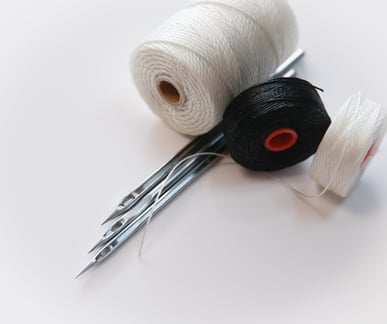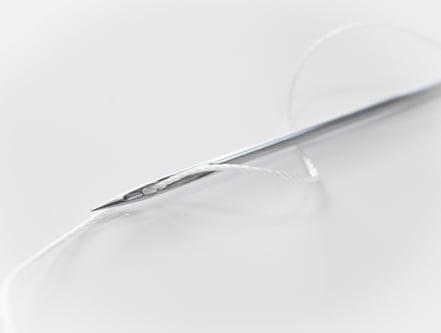
Having the correct needle to thread configuration is essential for running a cost efficient and effective performing application within your sewing system. Though this practice is often overlooked, choosing the correct needle for your sewing application is absolutely critical to flawless performance. With the new thread and sewn fabric materials available today, it may be time to check the needle size for your operation – Are you having skipped stitches and thread breaks? Are you using the same needles you have always used? Here are some tips to help you see if you have an opportunity for improvement.

Your Needle Could Be Too Small If:
- Thread breaks regularly – the needle is too small for the thread used, causing thread abrasion and breaks.
- Malformed stitches occur regularly – the needle is too small for the material, causing needle deflection.
- Needles break, even when replaced with new ones – breaking needles is a sure sign of a problem, and can lead to personal injury and machine damage.
Signs Your Needle is Too Large:
- Skipped stitches – Thread can be uncontrolled and loop formation is difficult with too large of a needle.
- Fabric Damage – larger than necessary holes in the stitch line can cause broken fibers and leave holes behind which can leak.
- Seam Pucker – puckered stitches are not straight and can deform the fabric along the seam line.
For quick reference, listed below is a chart that includes the most common bonded polyester and nylon sewing thread sizes and the needle size recommendation for each size.
Needle and Thread Size Chart
Thread Size |
Metric Needle Size Range |
US Needle Size Range
|
Thread Diameter |
69 |
100-110 |
16-18 |
.0115" (.292mm) |
92 |
110-120 |
18-19 |
.0133" (.337mm) |
138 |
120-140 |
19-22 |
.0163" (.414mm) |
207 |
140-180 |
22-24 |
.0200" (.508mm) |
277 |
180-230 |
24-26 |
.0231" (.586mm) |
346 |
230-280 |
26-28 |
.0258" (.655mm) |
415 |
250-330 |
27-30 |
.0283" (.718mm) |
462 |
300-350 |
29-31 |
0.0315” (0.8mm) |
554 |
330-380 |
30-32 |
.0326" (.828mm) |

An Easy Way to Check Your Needle to Thread Size
- Grab a needle and about 12 inches of the thread you use.
- Thread the needle.
- Hold both ends of the thread and move one end up to create a 60 degree angle. The needle should slide down the thread.
- Now reverse the process and see if the needle slides back down the thread.
Does the needle slide freely down the thread? If so you know the needle is large enough – if not, your needle may be too small. In general, you want the smallest size that will slide freely down the thread.
While there are many other features to consider when choosing the right needle for your sewing application, size is one that is fairly easy to determine and check. Service Thread manufactures industrial threads and yarns, and has broad knowledge about industrial sewing and textile application best practices. Let us know if you need help determining the right needle or thread size for your industrial sewing application.



